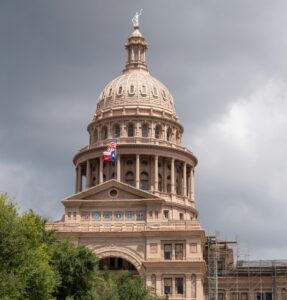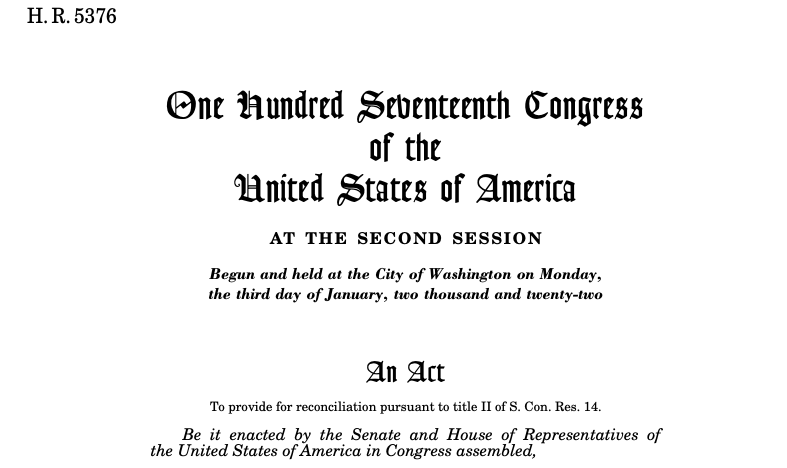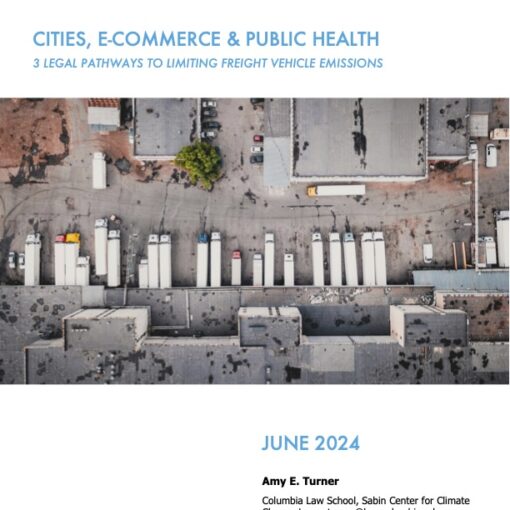
Texas’ Third Court of Appeals will hear arguments tomorrow, April 23, 2025, in a case that cuts to the core of how state and local governments coexist. In Texas v. City of Houston, City of San Antonio, and City of El Paso, a group of Texas cities is challenging one of the most sweeping preemption laws adopted anywhere in the country. That law, the Texas Regulatory Consistency Act (TRCA), gives the state nearly total control over a range of issues, including how cities can protect workers from extreme heat and other impacts of climate change. For local policymakers in Texas, the case will shape the options available to enact innovative measures to adapt to a changing climate.
The Texas Regulatory Consistency Act
The TRCA adds language to eight Texas codes preempting city and county regulation of “conduct in a field of regulation that is occupied by a provision” of any of the eight state codes. The amended codes are the Agriculture, Business & Commerce, Finance, Insurance, Labor, Natural Resources, Occupations, and Property Codes. The Act does not specify when a field of regulation will be deemed “occupied,” and statements in Act’s legislative history suggest that was a deliberate choice so that courts would ultimately have to define the TRCA’s scope. The TRCA also creates a private right of action for any person—broadly defined to include individuals and “any legal or commercial entity”—to challenge a local law under the Act, allows prevailing plaintiffs to recover their costs and attorney’s fees, and waives local governments’ sovereign immunity from such suits. Galled by the breadth of the Act and convinced it blows up local governments’ authority in nearly total ways, critics have termed the law the “Death Star.”
The Texas House of Representatives’ committee report describing the Act’s background and purpose argues that local governments “need relief from the pressure to duplicate state regulatory and enforcement efforts,” and that “job creators need a baseline of regulatory consistency across the state.” But critics have pointed out that the law was prompted by specific local actions the state wanted to quash, including climate change adaptation measures adopted in Austin and Dallas requiring employers to give workers regular breaks to help protect them from the effects of extreme heat. The law’s text backs them up: as amended by the TRCA, the Texas Labor Code specifically preempts any local measures concerning “breaks, employment benefits, [and] scheduling practices,” cutting off Austin and Dallas’ efforts to protect outdoor workers. This is just one of several ways in which the TRCA could limit cities’ ability to protect their residents from the impacts of climate change.
City Challengers Score an Early Victory
Before the TRCA was scheduled to take effect, the City of Houston sued the state alleging that the law violated the Texas Constitution. The Cities of San Antonio and El Paso later intervened in the case to raise similar arguments. The three cities prevailed in trial court, winning a declaration that the TRCA was unconstitutional just days before the law was scheduled to go into effect. (More on that below.)
The State immediately appealed, automatically staying the trial court’s order and allowing the law to take effect as scheduled on September 1, 2023. That appeal is now fully briefed and set for oral argument this week.
Both sides devote considerable time in their briefings to the claims’ ripeness, the cities’ standing, and whether sovereign immunity protects the state. Those arguments are important to this phase of the litigation and it is possible that the appellate court could choose to resolve the case on one of those grounds. But those arguments are not a focus of this post because they are not the arguments most likely to influence similar litigation in other states. In addition, even if the intermediate court tosses the case on jurisdictional grounds, the intense political interest in this case makes it all but certain that the constitutional arguments will ultimately be heard by the Texas Supreme Court.
The Constitutional Arguments
Texas’s constitution, like many other state constitutions, contains a home rule provision that gives certain cities broad power to manage local affairs, with the caveat that the state has ultimate sovereignty over local governments. Under Article 11 § 5(a) of the Texas Constitution, city charters are “subject to such limitations as may be prescribed by the [State] Legislature, and no charter or any ordinance passed under said charter shall contain any provision inconsistent with the Constitution of the State, or of the general laws enacted by the Legislature of this State.”
At its core, the challenge to the TRCA is about how far that Constitutional language allows the state to go in limiting local governments’ autonomy. In simple terms, the city challengers—Houston, San Antonio, and El Paso—argue that the TRCA is so broad it effectively eliminates home rule from the Texas system of government. The state’s response is that Texas’ “Home Rule Amendment does not impose a stand-alone limit on the Legislature’s power because the regulatory power granted to home-rule cities has always been subject to being ‘withdraw[n]’ by the Legislature by general law.”
Three of the cities’ core arguments against the TRCA are worth unpacking in more detail here. First, the cities argue that the Texas Constitution recognizes preemption only where there is an actual conflict between a state law and a local one, because all that is specifically outlawed in the state Constitution is “any [local] provision inconsistent with … the general [state] laws.” As a result, the state cannot preempt whole subjects at all, but rather only the specific matters within a subject that the state has actually addressed in law. Preempting whole fields of regulation, the cities argue, is never allowed. The state takes a broader view of what it means to have enacted state laws, arguing instead that preempting “established regulatory fields defined by [enacted] laws” creates a constitutionally sufficient conflict with any local laws on the same subject, even if the specific issue a local law would address is not explicitly named in the state code. If it reaches the issue, the court will have to decide just how narrowly (or broadly) to define a conflict that amounts to preemption under the Texas Constitution.
Second, the cities argue that the TRCA shifts the burden of proof. They say the state constitution places the burden on the state to invalidate local laws as inconsistent with state law, usually after the local laws are enacted. But under the TRCA, cities now have to prove that their local laws are consistent with state law, possibly before adopting the local laws. The state responds that the cities assume too much about how heavily courts would rely on the wording of the TRCA in deciding a case about whether a local law is preempted. According to the state, no “TRCA provision speaks to burdens of proof,” and even if the TRCA does affect assumed ways of understanding how preemption cases would be litigated, the state points out, the “Legislature can modify … common-law burdens of proof as it sees fit.”
Third, the cities argue that by failing to define what the TRCA means by “occupied by a provision,” the TRCA leaves cities with no “workable standard” to know which local laws are preempted. That’s a problem because courts have held that Texas law requires the state to speak with “unmistakable clarity” when it intends to preempt local law. The State responds that no one has disputed that the State’s intent with TRCA was to preempt local law, and clarity on the state’s intent to preempt is all the constitution requires.
The Outcome
For cities in Texas, the case will have a major bearing on their authority to regulate their own affairs. Any decision is virtually certain to be appealed to the Texas Supreme Court, so a win in the intermediate appellate court may not suggest that the cities will ultimately be successful. But it could free up the city challengers to explore innovative ways of responding to climate change with less risk of preemption, and restore Texas cities previous efforts to protect outdoor workers in extreme heat, especially if the now-pending federal rule on protecting outdoor workers from heat fails to do so.
On the other hand, a win for the state may embolden future Texas legislatures to expand the state’s preemption still further. A bill proposed in this year’s session already aims to do just that, expanding on the TRCA to address additional titles in the Texas code, settling any doubt about whether a city bears the burden of proving its rules are not preempted, and enhancing penalties for cities that enact preempted laws. It is possible that the new bill would become law before the court reaches a decision in this case, in which case there may be another round of briefing before the court reaches a decision.
As communities around the country face accelerating and intensifying climate change challenges, understanding and using all their legal tools to protect those affected are critical. Taking a close look at the way this litigation is unfolding may give cities in other states a head start on designing local laws to be less vulnerable to preemption.
Dan Metzger is a Senior Fellow with the Cities Climate Law Initiative at the Sabin Center for Climate Change Law at Columbia Law School.





